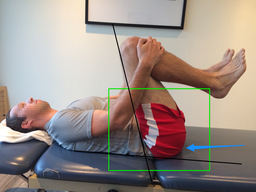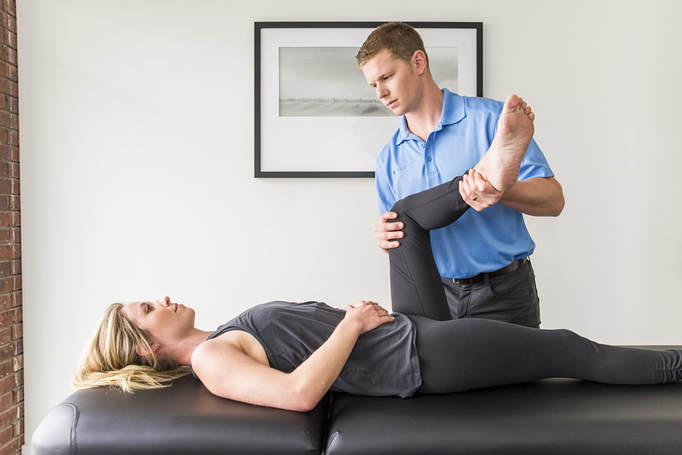- Home
- About Us
- TSPT Academy
- Online Courses
-
Resources
- Newsletter
- Business Minded Sports Physio Podcast
- Day in the Life of a Sports PT
- Residency Corner
-
Special Tests
>
-
Cervical Spine
>
- Alar Ligament Test
- Bakody's Sign
- Cervical Distraction Test
- Cervical Rotation Lateral Flexion Test
- Craniocervical Flexion Test (CCFT)
- Deep Neck Flexor Endurance Test
- Posterior-Anterior Segmental Mobility
- Segmental Mobility
- Sharp-Purser Test
- Spurling's Maneuver
- Transverse Ligament Test
- ULNT - Median
- ULNT - Radial
- ULNT - Ulnar
- Vertebral Artery Test
- Thoracic Spine >
-
Lumbar Spine/Sacroiliac Joint
>
- Active Sit-Up Test
- Alternate Gillet Test
- Crossed Straight Leg Raise Test
- Extensor Endurance Test
- FABER Test
- Fortin's Sign
- Gaenslen Test
- Gillet Test
- Gower's Sign
- Lumbar Quadrant Test
- POSH Test
- Posteroanterior Mobility
- Prone Knee Bend Test
- Prone Instability Test
- Resisted Abduction Test
- Sacral Clearing Test
- Seated Forward Flexion Test
- SIJ Compression/Distraction Test
- Slump Test
- Sphinx Test
- Spine Rotators & Multifidus Test
- Squish Test
- Standing Forward Flexion Test
- Straight Leg Raise Test
- Supine to Long Sit Test
-
Shoulder
>
- Active Compression Test
- Anterior Apprehension
- Biceps Load Test II
- Drop Arm Sign
- External Rotation Lag Sign
- Hawkins-Kennedy Impingement Sign
- Horizontal Adduction Test
- Internal Rotation Lag Sign
- Jobe Test
- Ludington's Test
- Neer Test
- Painful Arc Sign
- Pronated Load Test
- Resisted Supination External Rotation Test
- Speed's Test
- Posterior Apprehension
- Sulcus Sign
- Thoracic Outlet Tests >
- Yergason's Test
- Elbow >
- Wrist/Hand >
- Hip >
- Knee >
- Foot/Ankle >
-
Cervical Spine
>
- I want Financial Freedom
- I want Professional Growth
- I want Clinical Mastery
|
Recently, a fellow physical therapist and friend came to me for some guidance regarding a case he was having difficulty managing. Below is a synopsis of his initial evaluation. After reading his initial evaluation, please write down a few notes or comments (positives, negatives, things you may have done differently, or further questions). Following his evaluation, I provided my response to certain questions and treatment ideas to provide further insight into his case. Therapist Initial Evaluation (my friend):Main Complaint: Electric shock from the right low back to distal hamstring with a variety of different movements. Prior injection resolved S1 distribution numbness. Static Posture: -Spine: normal spine curves - Hips: narrow, symmetrical hips - Knee/ankle: genu varum Palpation: -Tenderness and tightness into piriformis Functional movement testing: -Inline lunge: increased hip flexion, but movement was painfree -Hurdle step: R lower extremity in WB- poor hip motor control -Gait: no pelvic innom. rotation - Squat: inc hip flexion, HS avoidance, R sided lumbar pain "catching" - SL squat: medial collapse, 'shakiness bilat' - SL stance: R sided LOB - SL step down: avoided WB through R via trendelenburg - Elbow flexion iso #8: paraspinal recruitment thoracic/lumbar, no TA activation Lumbar stability: -Bent knee fall out: min TA activation -Hooklying marches: mod TA activation; limited hip flexion to 105 deg because it will trigger pain -ASLR: tight HS, no neural symptoms -PSLR: 50% of WNL with back pain Muscle length testing: HS 90/90: R 145, L 155 + Thomas B, inc sx L Ely's + at 110 knee flexion, R WNL + ITB R, WNL L Passive range of motion: Hip 110% WNL with catch during full flexion Overall Assessment: Pt is a 45-year old male presenting with chronic, insidious onset of low back pain with R sided, electric shock sensation down back of leg and into distal hamstring. Pt has movement impairments with hurdle step (R WB poor hip motor control), gait with minimal pelvic innominate rotation, SL squat with medial knee collapse. Additionally he had frequent R lumbar spasming reported during exam. Pt has functional limitations in running, rowing, and ADLs, sleeping. Initial HEP prescribed: L thomas test stretch, L hip flexor Stretch, hooklying isometric marching My Response to Evaluation: 1) From his symptom description and testing, we know he has some level of nerve irritation. I would perform a SLUMP test. If positive, neural glides could be a great treatment for symptom relief. 2) How is his hip mobility, hip IR/ER range of motion and end-feel? Commonly limited hip mobility places stress on the lumbar spine due to improper loading through the hip joints (from his SL squat and other functional movements, he appears to be offloading his right hip). 3) How is his thoracic spine mobility? 4) The patient appears to have increased hip flexion with various movements. Be sure this is not actually early/excessive lumbar flexion. (See link to a post I wrote on hip flexion vs. lumbar flexion 5) The patient appears to have poor coordination between the lumbar spine and hip joints. I would look at more basic movements, such as hand heel rocks (butt to heels in quadruped) to assess lumbopelvic disassociation and general spinal mobility. 6) How is lumbar extension? Many people lack lumbar extension due to prolonged flexion (see point 4 above) and become sensitive to that movement. Retraining lumbar extension throughout repeated loading is often beneficial for range of motion, mobility, and nerve irritation. My Response Assessment: Incorporate further mobility exercises for the hip and thoracic spine (likely). Stretching (as he initially prescribed) can further excite nerve symptoms and cause irritation. Additionally, I would incorporate more neural tensioning exercises for symptom management. Since the nerve is irritated, add the recumbent bike or low level total gym for nerve nutrition and proper loading through the hip. From a manual therapy perspective, I have seen good results with lateral hip mobilizations using a mobilization belt. This can improve hip mobility and reduce neural tension. Finally, basic exercises like Cat/Cow are good for emphasizing thoracic extension and are a precursor for lumbopelvic mechanics. -Jim Heafner PT, DPT, OCS
1 Comment
Sophia Ohile
8/25/2020 07:07:40 am
I have a case a 21 year old male who had a car Accidents with electric shock, as a result the person cant move from he hip down to the feet but if you touch him, he knows you touch.
Reply
Leave a Reply. |
Dr. Brian Schwabe's NEW Book in partner with PaleoHacks!
Learn residency-level content on our
Insider Access pages We value quality PT education & CEU's. Click the MedBridge logo below for TSPT savings!Archives
July 2019
Categories
All
|







 RSS Feed
RSS Feed